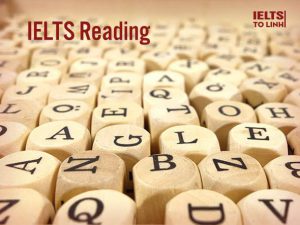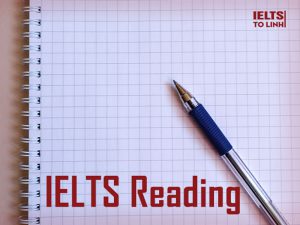Đối với các kỹ năng trong IELTS, phải chăm chỉ luyện tập mới có thể nhanh chóng đạt kết quả tốt và Reading không phải là một ngoại lệ. Để xem bản thân đã tự lực nâng trình IELTS Reading như thế nào thì phải làm bài tập mới biết đúng không nè? Nhớ dù là bài tập thì vẫn nên ứng dụng các phương pháp có ích trong Reading mà cô đã chia sẻ để xem chúng thực sự hữu ích như thế nào nha.
Tổng hợp: Trần Tố Linh
Bài tập luyện thi IELTS Reading 10

The Pursuit of Happiness
“New research uncovers some anti-intuitive insights into how many people are happy – and why.”
_____________________________
Compared with misery, happiness is relatively unexplored terrain for social scientists, Between 1967 and 1994, 46,380 articles indexed in Psychological Abstracts mentioned depression, 36,851 anxiety, and 5,099 anger. Only 2,389 spoke of happiness, 2,340 life satisfaction, and 405 joy.
Recently we and other researchers have begun a systematic study of happiness. During the past two decades, dozens of investigators throughout the world have asked several hundred thousand Representative sampled people to reflect on their happiness and satisfaction with life or what psychologists call “subjective well-being”. In the US the National Opinion Research Center at the University of Chicago has surveyed a representative sample of roughly 1,500 people a year since 1957; the Institute for Social Research at the University of Michigan has carried out similar studies on a less regular basis, as has the Gallup Organization. Government-funded efforts have also probed the moods of European countries.
We have uncovered some surprising findings. People are happier than one might expect, and happiness does not appear to depend significantly on external circumstances. Although viewing life as a tragedy has a long and honorable history, the responses of random samples of people around the world about their happiness paint a much rosier picture. In the University of Chicago surveys, three in Americans say they are very happy, for example. Only one in 10 chooses the most negative description “not too happy”. The majority describe themselves as “pretty happy”.
How can social scientists measure something as hard to pin down as happiness? Most researchers simply ask people to report their feelings of happiness or unhappiness and to assess how satisfying their lives are. Such self-reported well-being is moderately consistent over years of retesting. Furthermore, those who say they are happy and satisfied seem happy with their close friends and family members and to a psychologist-interviewer. Their daily mood ratings reveal more positive emotions, and they smile more than those who call themselves unhappy. Self-reported happiness also predicts other indicators of well-being. Compared with the depressed, happy people are less self-focused, less hostile and abusive, and less susceptible to disease.
We have found that the even distribution of happiness cuts across almost all demographic classifications of age, economic class, race and educational level. In addition, almost all strategies for assessing subjective well-being – including those that sample people’s experience by polling them at random times with beepers – turn up similar findings. Interviews with representative samples of people of all ages, for example, reveal that no time of life is notably happier or unhappier. Similarly, men and women are equally likely to declare themselves “very happy” and “satisfied” with life, according to a statistical digest of 146 studies by Marilyn J, Haring, William Stock and Morris A, Okun, all then at Arizona State University.
Wealth is also a poor predictor of happiness. People have not become happier over time as their cultures have become more affluent. Even though Americans earn twice as much in today’s dollars as they did in 1957, the proportion of those telling surveyors from the National Opinion Research Center that they are “very happy” has declined from 35 to 29 percent.
Even very rich people – those surveyed among Forbes magazine’s 100 wealthiest Americans – are only slightly happier than the average American. Those whose income has increased over a 10-year period are not happier than those whose income is stagnant. Indeed, in most nations the correlation between income and happiness is negligible – only in the poorest countries, such as Bangladesh and India, is income a good measure of emotional well-being.
Are people in rich countries happier, by and large, than people in not so rich countries? It appears in general that they are, but the margin may be slim. In Portugal, for example, only one in 10 people reports being very happy, whereas in the much more prosperous Netherlands the proportion of very happy is four in 10. Yet there are curious reversals in this correlation between national wealth and well-being -the Irish during the 1980s consistently reported greater life satisfaction than the wealthier West Germans. Furthermore, other factors, such as civil rights, literacy and duration of democratic government, all of which also promote reported life satisfaction, tend to go hand in hand with national wealth, As a result, it is impossible to tell whether the happiness of people in wealthier nations is based on money or is a by-product of other felicities.
Although happiness is not easy to predict from material circumstances, it seems consistent for those who have it, In one National Institute on Aging study of 5,000 adults, the happiest people in 1973 were still relatively happy a decade later, despite changes in work, residence and family status,
[ From “The Pursuit of Happiness” by David G, Myers and Ed Diener. Copyright © May 1996 by Scientific American, Inc. All rights reserved. ]

Questions 1-3
Choose the appropriate letters A-D and write them in boxes 1-3.
1 What point are the writers making in the opening paragraph?
A Happiness levels have risen since 1967.
В Journals take a biased view on happiness.
С Happiness is not a well-documented research area,
D People tend to think about themselves negatively.
2 What do the writers say about their research findings?
A They had predicted the results correctly.
В They felt people had responded dishonestly.
С They conflict with those of other researchers.
D Happiness levels are higher than they had believed.
3 In the fourth paragraph, what does the reader learn about the research method used?
A It is new.
В It appears to be reliable.
С It is better than using beepers.
D It reveals additional information.
Questions 4-7
According to the passage, which of the findings below (4-7) is quoted by which Investigative Body (A-G)?
NB There are more Investigative Bodies than findings, so you do not have to use all of them.
4 Happiness is not gender related.
5 Over fifty percent of people consider themselves to be ‘happy’.
6 Happiness levels are marginally higher for those in the top income brackets.
7 ‘Happy’ people remain happy throughout their lives.
Investigative Bodies
A The National Opinion Research Center, University of Chicago
B Arizona State University
С The Institute for Social Research, University of Michigan
D Forbes Magazine
E The National Institute on Aging
F The Gallup Organization
G The Government
Questions 8-13
Complete the summary of Reading Passage below. Choose your answers from the box at the bottom of the page and write them in boxes 8-13. There are more words than spaces so you will not use them all. You may use any of the words more than one time.
HOW HAPPY ARE WE?
Example :
Our happiness levels are … …… by relatively few factors.
Answer: Affected
For example, incomes in the States have ….. (8)….. over the past forty years but happiness levels have ….. (9)….. over the same period. In fact, people on average incomes are only slightly….. (10)….. happy than extremely rich people and a gradual increase in prosperity makes ….. (11)….. difference to how happy we are. In terms of national wealth, populations of wealthy nations are ….. (12)….. happier than those who live in poorer countries. Although in some cases this trend is ….. (13)….. and it appears that other factors need to be considered.
| List of Words |
| Stopped Slightly too great
Doubled Significant similar some Stabilized Remarkably reversed dropped No Less much affected Crept up Slowed down more clearly |
Answer: (Xin bôi đen đoạn bên dưới để xem đáp án)
1 С
2 D
3 В
4 В
5 A
6 D
7 E
8 doubled
9 dropped
10 less
11 no
12 slightly
13 reversed
Các em sau khi đã hoàn tất bài tập hôm nay thì đừng nên bỏ lỡ bài tập Reading 11 của cô nhé. Phải thực hành càng nhiều kỹ năng Đọc mới càng nhuần nhuyễn phải không nào?
Trần Tố Linh












